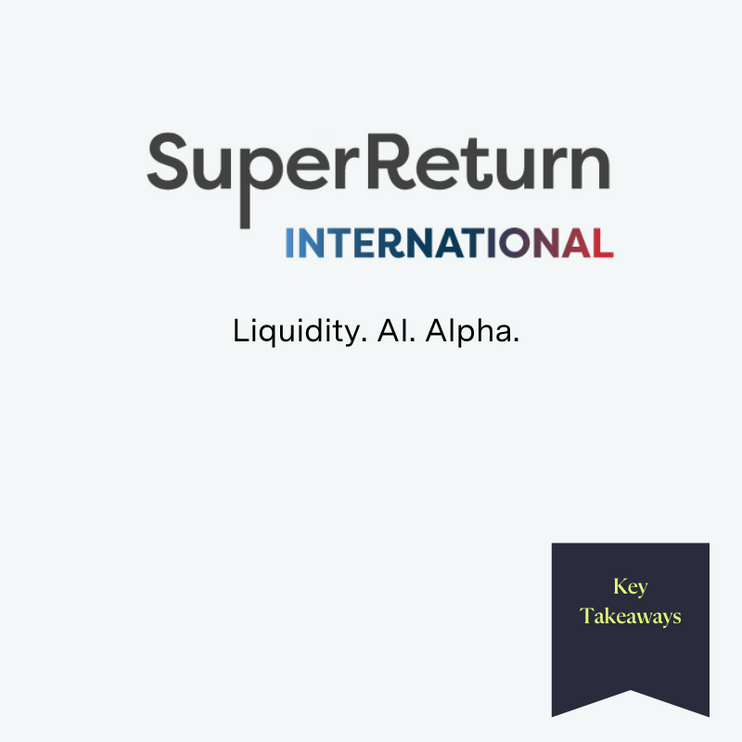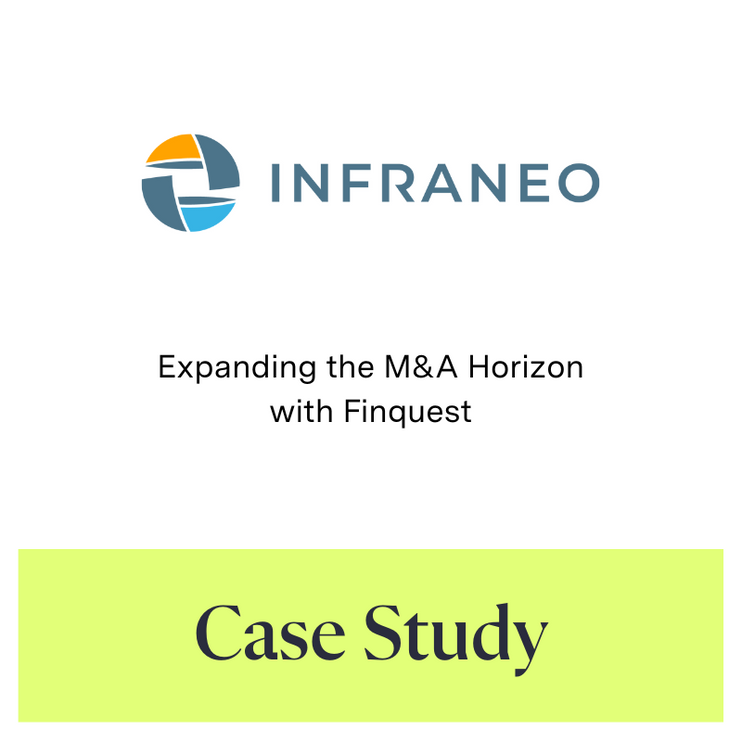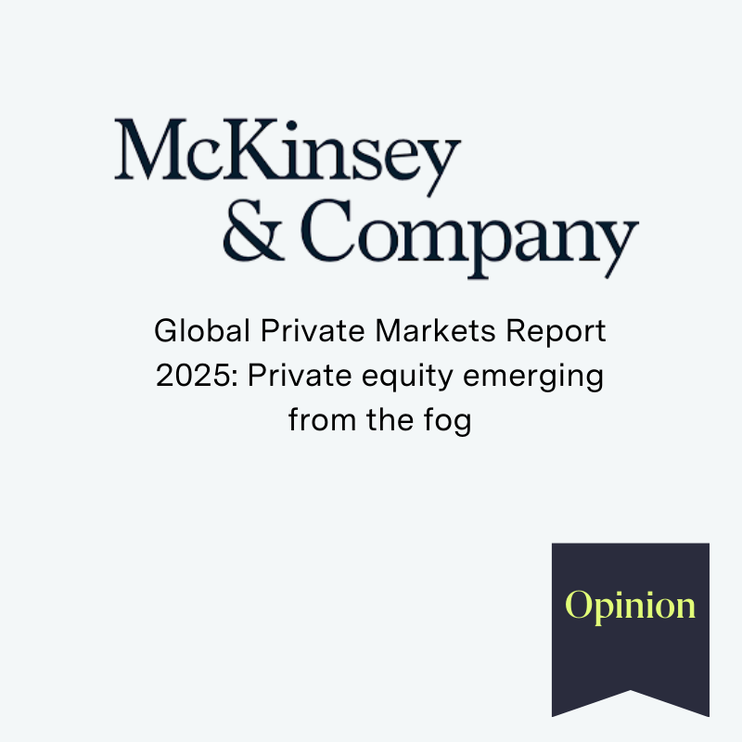
Liquidity, AI, and Alpha in the Lower Mid-Market: Key Takeaways from SuperReturn 2025
Back from a packed week at SuperReturn International in Berlin—the world’s largest private equity gathering—our Finquest team tracked the action both on stage and off. With over 6,000 GPs and LPs in attendance, conversations revealed critical trends reshaping the market.
Amid the macro shifts and technical deep-dives, there were lighter moments too—like Serena Williams recalling her father’s advice to “always ask for equity,” or Bono reminding the room that scaling impact takes more than good intentions. Not exactly investment theses, but a welcome reminder that conviction still matters.
Drawing from discussions with leading investors, industry voices, and our team’s own on-the-ground takeaways, here are the themes driving private equity into the second half of 2025:
-
1. Liquidity Pressures and Short-Term Exits
Liquidity pressures, particularly from 2021-vintage deals nearing maturity, are increasingly addressed through partial exits, continuation vehicles, and structured secondaries, as noted by Mauro Moretti (Three Hills) and Cara Griffiths.
It was also flagged that the fundraising spike in 2021 could lead to a glut of exits in 2026–2027. With M&A down 15–20% in the last two months, the market is in a holding pattern—but pressure is building. Conversations between LPs and GPs are increasingly focused on liquidity, leading to more experimentation with continuation vehicles and alternative structures, which only offer a fractional solution.
Finquest Insight: It’ll probably take another 1-2 years before exits normalize fully, and the pent-up supply can be significantly resorbed.
- 2. AI and the Productivity Paradigm Shift
Robert Smith (Vista Equity Partners) emphasized the impending transformative impact of Agentic AI on the knowledge economy. He specifically highlighted the critical role of the Agent Administrator Layer, managing AI agents’ permissions. The traditional “Rule of 40” (growth plus EBITDA margin) is shifting to a “Rule of 70,” driven by significant productivity improvements from AI.
Christian Lucas (Silver Lake) echoed this, pointing to AI’s operational lift across portfolios—automating workflows, enhancing user experiences, streamlining back office.
James Stevens (Bain Capital) shared a tangible example: a portfolio insurance company that underwent a five-year digital overhaul—“open heart surgery” for its core platform—that led to major gains in both productivity and customer satisfaction. Elsewhere, implementing an AI-powered help function reduced customer service tickets by 75%. These aren’t edge cases—they’re early signs of AI’s impact at the application layer.
Finquest Insight: Most firms are still AI-curious. The best are AI-ready. AI-driven businesses are already redefining operational efficiency, proving that value creation lies not just in the tools, but in the willingness to deploy and iterate at speed.
-
3. Increasing Appeal of the Mid-Market
The mid-market continues to attract attention due to better returns, lower volatility, and increased opportunities for proprietary deals. We agree: the attractiveness of the lower mid-market segment ($5–150M revenue), highlighting its founder-led businesses and relative invisibility to broader investor groups.
Finquest Insight: The lower mid-market remains a significant white space for investors seeking proprietary, founder-led opportunities and sustainable alpha.
-
4. Navigating Macro Volatility through Sector Resilience
The ECB is indeed cutting rates faster than the Fed, and while tariffs briefly froze market activity, Steve Wise (Carlyle) plainly stated, “We’re done waiting.” Dealmaking is actively restarting, driven by sectors such as defence tech, cybersecurity, and healthtech, emphasizing a return to fundamental business strengths.
With dry powder still near $1.2 trillion, the readiness to move is evident.
Finquest Insight: Macro noise is constant; resilience, pricing power, and differentiated IP now define competitive advantage. Sector discipline and execution speed offer the critical edge.
-
5. Europe’s Digital Transformation Opportunity
Christian Lucas (Silver Lake) highlighted a significant technological adoption gap, noting that approximately 90% of European SMEs lag over a decade behind their U.S. counterparts. This lag presents considerable opportunities for digital transformation across key European markets. Lucas specifically pointed to markets such as Germany, France, Spain, and Italy as key areas where this digital lag creates a step-change opportunity for transformation.
Finquest Insight: Digitizing European SMEs, especially in lagging sectors, presents significant growth and investment opportunities, which is amplified by the valuation gap between Europe and the US, making Europe the more attractive geography at this point.
-
6. Factors Driving Cautious Optimism
Despite recent disruptions due to tariff uncertainties, key factors contribute to cautious optimism:
- Substantial dry powder of $1.2 trillion ready to deploy.
- European interest rates anticipated to lower faster than U.S. rates, further enhancing Europe’s investment attractiveness.
- Significant backlog of companies ready for exit upon market stabilization.
- Potential EBITDA gains going forward through operations and AI implementation.
Finquest Insight: Market normalization will resume, driven by substantial investment reserves and easing capital costs, though exact timing remains uncertain. Comparisons to 2009 NAV recovery trajectories suggest we may be entering a rebound cycle—one where patient capital and disciplined exits could outperform, especially in sectors underpinned by strong fundamentals and scalability.
What It All Means For You
- Be AI-ready, not just AI-curious. Post-close value creation now hinges on tangible automation and real tech enablement—not buzzwords.
- Double down on the lower mid-market. This is where alpha is still accessible—and where the digital uplift is often most actionable. Bolt-on acquisitions will remain a key driver of value creation for the years to come.
- Prioritize resilience over precision. In a macro environment defined by noise, the best funds are focusing on sectors with pricing power and strong fundamentals—not trying to predict the unpredictable.
- Execution beats perfection. As one investor put it, building from V1 to V8 won’t be perfect—what matters is that you start. Firms that wait for clarity will lose ground to those who move with conviction.
Tanguy, Luke, and Lara returned from Berlin with a unified read: private equity is moving into a new phase—less hype, more execution. The next cycle will reward clarity, speed, and readiness.
If you’re preparing for what’s next, these are the levers to pull. And if you’re building the next phase of your pipeline, let’s connect.



